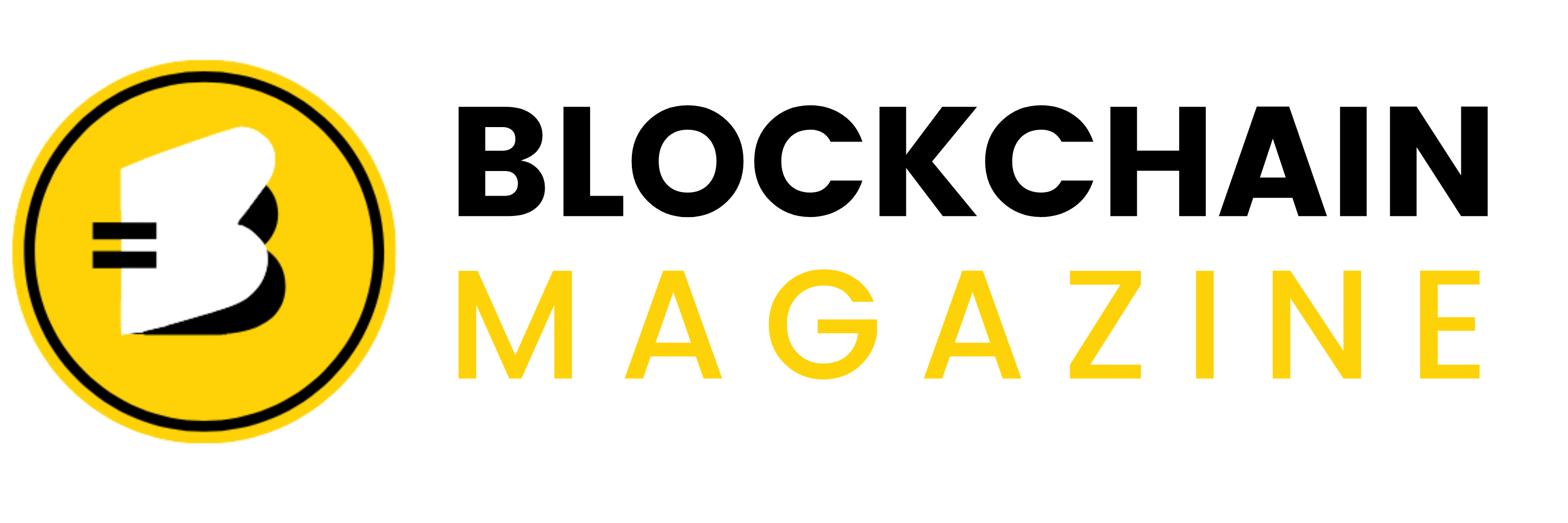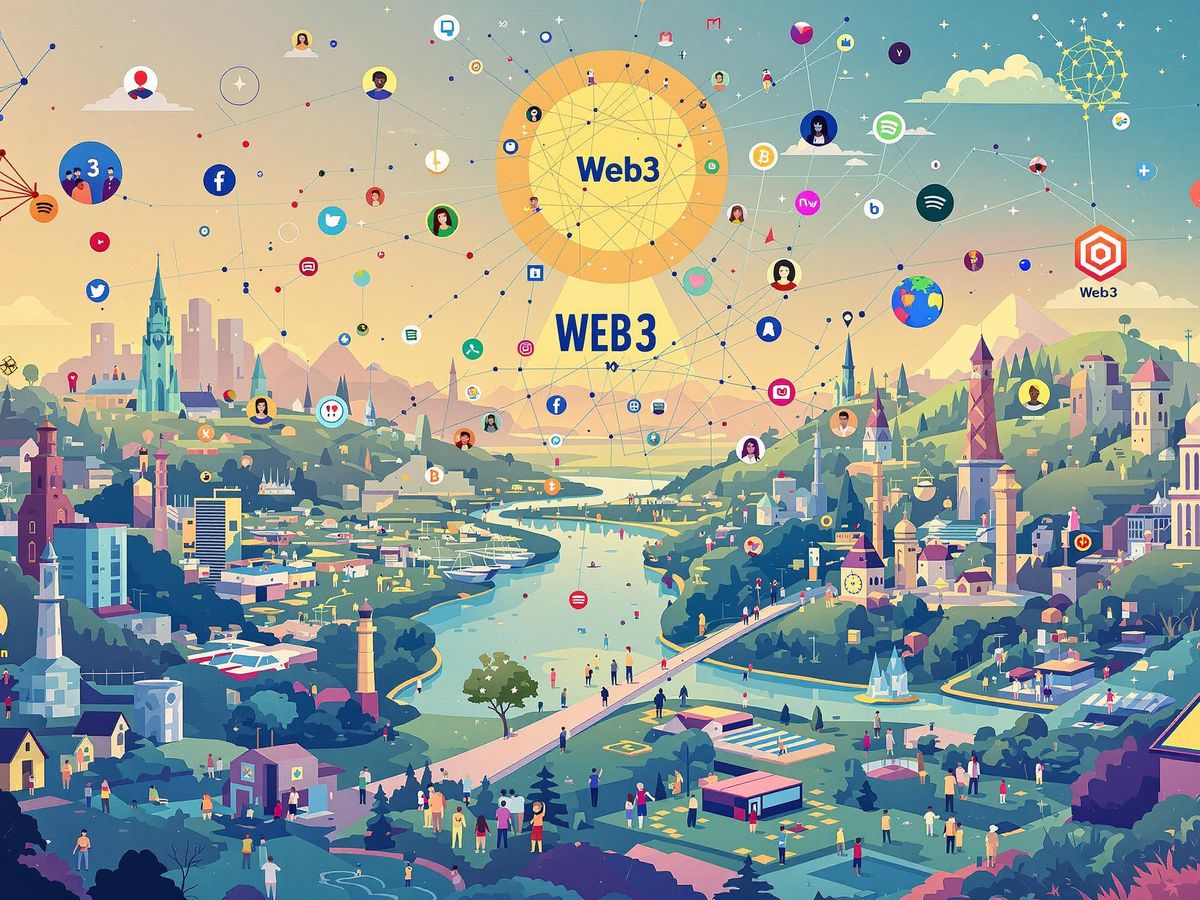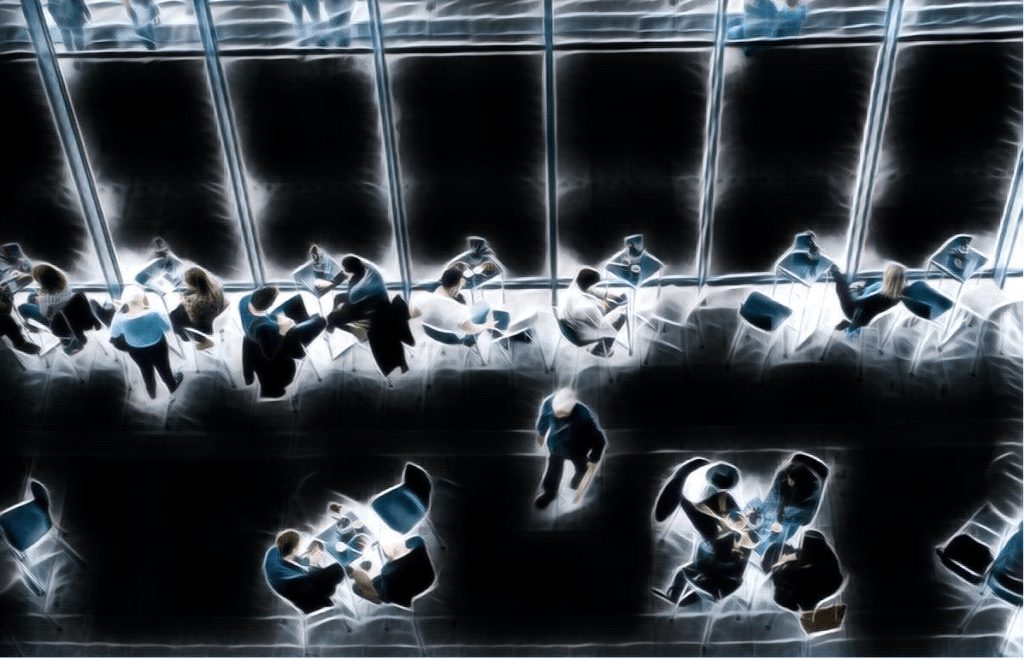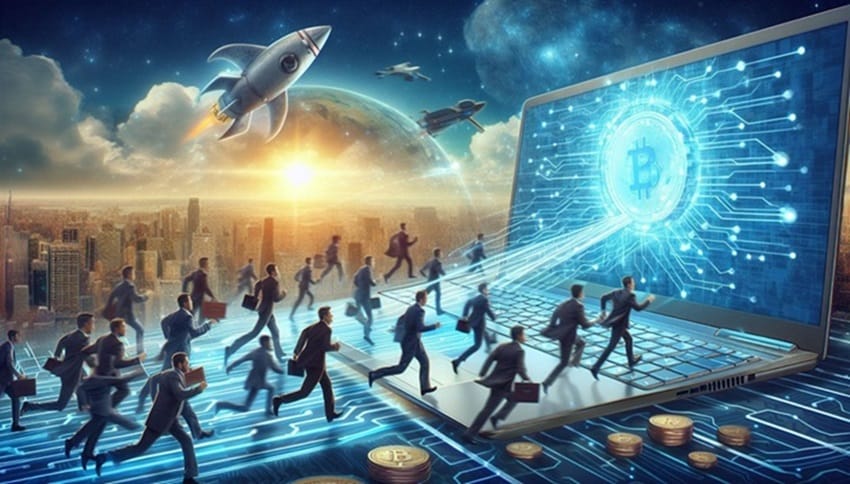From Centralization to Decentralization, How Power is Shifting in Web3!
The internet has come a long way, hasn’t it? From the static pages of Web1 to the social media explosion of Web2, we’ve seen it evolve and reshape our lives. But now, Web3 is here, and it’s turning the script upside down. At the heart of this shift is the move from centralization to decentralization. It’s not just about tech—it’s about power, control, and who gets to make the rules online. Let’s break it all down and see what this means for the future of the internet.
Key Takeaways
- Web3 moves power from big corporations and central authorities to individual users.
- Decentralization allows for more control over personal data and digital assets.
- Blockchain technology is the foundation that makes decentralization possible.
- Decentralized governance, like DAOs, gives communities a say in decision-making.
- Despite its promise, decentralization faces challenges like security and regulation.
The Evolution of the Internet: From Web1 to Web3
Understanding Web1 and Its Limitations
Web1, or the first generation of the internet, was like a giant digital library. It was mostly read-only, meaning users could consume content but couldn’t interact with it much. Think static web pages, simple text, and maybe a few images. It was groundbreaking for its time, but it had its limits. There was no way for users to contribute or connect directly. Everything was controlled by website creators, and the experience was pretty one-sided.
The Rise of Web2 and Centralized Platforms
Then came Web2, which flipped the script. Suddenly, the internet was all about interaction. Social media platforms like Facebook and YouTube let people create content, share it, and connect with others. But here’s the catch: these platforms became gatekeepers of our data. They centralized control, deciding what we could or couldn’t do. Sure, Web2 gave us a more dynamic internet, but at a cost: privacy and ownership. Companies, not users, held the power.
How Web3 Redefines Digital Interaction
Enter Web3, a whole new way of thinking about the internet. Powered by blockchain technology, it’s about decentralization and user control. In Web3, you own your data. You can interact with platforms without relying on giant corporations to mediate. It’s like moving from a walled garden to an open field where everyone has a say. With innovations like decentralized apps (dApps) and cryptocurrencies, Web3 is reshaping how we think about ownership, privacy, and digital freedom. In short, it’s not just an upgrade—it’s a revolution in how we use the web.
Centralization and Decentralization: A Paradigm Shift
The Core Principles of Centralization
Centralization has been the backbone of most systems for decades. It’s a setup where one entity or a small group holds the reins, calling the shots for everyone else. Think of banks, governments, or big tech companies. They manage the data, control the rules, and decide how things operate. This model works because it’s efficient, predictable, and easy to regulate. But there’s a downside—it concentrates power and leaves little room for individual autonomy.
Key traits of centralization:
- Authority is hierarchical.
- Decisions are made by a central body.
- Users or participants have limited control over processes or data.
Decentralization in Web3 Explained
Now, decentralization flips this model on its head. Instead of one central authority, power is distributed across a network. In Web3, this means users have more control over their data, assets, and interactions. It’s like moving from a monarchy to a community where everyone has a say. Blockchain and distributed ledger technologies make this possible by ensuring that no single entity can dominate the system.
Benefits of decentralization in Web3:
- Ownership: Users own their data and digital assets.
- Transparency: Actions and transactions are visible on public ledgers.
- Resilience: No single point of failure, making systems harder to disrupt.
Balancing Centralized and Decentralized Models
Here’s the catch—decentralization isn’t perfect. It can be slower, harder to scale, and sometimes chaotic. That’s why a mix of both models often works best. For instance, some Web3 platforms use centralized components (like user-friendly interfaces) while keeping the core system decentralized.
The shift from centralization to decentralization isn’t about replacing one with the other—it’s about finding a balance that works for everyone.
Blockchain Technology: The Backbone of Decentralization
How Blockchain Enables Decentralization
Blockchain is the engine behind decentralization in Web3. Unlike traditional systems that rely on central servers, blockchain uses a network of nodes to store and verify data. This means no single entity controls the entire network, making it more resilient and transparent. Each transaction is recorded on a public ledger that’s immutable—once it’s there, it can’t be changed. This setup eliminates the need for intermediaries, like banks or tech giants, and puts control back in the hands of users.
Key advantages of blockchain decentralization include:
- Transparency: All transactions are visible and verifiable.
- Security: No central point of failure reduces vulnerability to attacks.
- User empowerment: Individuals have control over their data and assets.
Challenges in Blockchain Adoption
While blockchain has massive potential, it’s not without its hurdles. Here are some of the main challenges:
- Energy Consumption: Many blockchains, especially those using proof-of-work, consume significant energy.
- Scalability Concerns: As networks grow, maintaining speed and efficiency becomes harder.
- Regulatory Uncertainty: Governments are still figuring out how to regulate blockchain systems.
Blockchain is a powerful tool for decentralization, but its adoption requires addressing these challenges head-on. The balance between innovation and practicality will define its role in shaping Web3.
For more on how decentralization works in blockchain systems, check out Decentralization in Blockchain.
Governance in Web3: A New Era of Decision-Making
What is Decentralized Governance?
Decentralized governance flips the script on traditional decision-making. Instead of relying on a single authority or small group to make the rules, decisions are made collectively by participants. Imagine it like a digital town hall, where anyone with a stake in the system can vote or propose changes. This model is all about transparency and inclusivity, giving power back to the people who are directly affected.
In practice, many decentralized systems use tokens to represent voting power. The more tokens you hold, the bigger your voice in the decision-making process. While this approach democratizes governance, it also raises questions about fairness—after all, those with more resources can potentially dominate the conversation.
The Role of DAOs in Web3
Decentralized Autonomous Organizations, or DAOs, are the building blocks of governance in Web3. Think of DAOs as digital cooperatives. They operate on smart contracts, which automatically execute decisions based on member votes. Here’s how they work:
- Members join by purchasing or earning tokens.
- Proposals are submitted for community review.
- Voting takes place, often weighted by the number of tokens held.
DAOs can manage anything from funding new projects to overseeing community rules. The beauty of DAOs lies in their flexibility—they can adapt to serve a wide range of purposes. However, disputes and coordination challenges can still arise, especially in larger organizations.
Transparency and Inclusivity in Governance
A key promise of Web3 governance is transparency. Every transaction and decision is recorded on a blockchain, making it nearly impossible to hide bad behavior or corruption. This level of openness builds trust among participants.
Inclusivity is another cornerstone. Unlike traditional systems that may exclude people based on geography, income, or other factors, Web3 governance welcomes anyone with an internet connection. But inclusivity isn’t perfect yet—technical barriers and token costs can still limit participation.
Web3 governance is reshaping how we think about power and decision-making. It’s not just about who gets to vote—it’s about creating systems that are fair, open, and adaptable to everyone involved.
Real-World Applications of Decentralization in Web3
Decentralized Finance (DeFi) and Its Impact
Decentralized Finance, or DeFi, is one of the most transformative applications of Web3. By using blockchain technology, DeFi allows users to access financial services like lending, borrowing, and trading without relying on traditional banks or intermediaries. Here’s why it’s a game-changer:
- No Middlemen: Transactions happen directly between users, reducing fees and increasing transparency.
- Global Access: Anyone with an internet connection can participate, breaking down barriers for the unbanked.
- Programmable Money: Smart contracts automate processes, making financial services more efficient.
For example, platforms like Uniswap and Aave have already demonstrated how DeFi can reshape traditional banking by offering decentralized exchanges and lending protocols.
The Emergence of Decentralized Gaming
Decentralized gaming is changing the way players interact with virtual worlds. Unlike traditional games where developers control everything, Web3 gaming platforms give players true ownership of in-game assets. Here’s how:
- Players can own and trade items as NFTs (non-fungible tokens).
- Games like Decentraland let users buy virtual land and create experiences, all powered by blockchain.
- Tokenized economies reward players for their time and creativity.
This shift empowers gamers to monetize their skills and creations, making gaming more immersive and financially rewarding.
Web3 Social Networks and Data Ownership
Traditional social media platforms have long been criticized for exploiting user data. Web3 is flipping the script by giving users control over their own information. Key features include:
- Users own their data and decide who can access it.
- Content creators can directly monetize their work without relying on ad-driven revenue models.
- Decentralized platforms reduce censorship and platform bias.
For instance, decentralized networks aim to create a fairer, more transparent environment where users are stakeholders, not products.
“Decentralization in Web3 isn’t just about technology—it’s about giving power back to the people, whether in finance, gaming, or social media.”
These real-world applications are just the beginning, showcasing how Web3 is reshaping industries and empowering individuals across the globe.
The Challenges and Risks of Decentralization
Security Concerns in Decentralized Systems
Decentralized systems, while innovative, introduce a new set of security challenges. Without a central authority to oversee operations, vulnerabilities can emerge in unexpected ways. For example:
- Smart contracts, which automate transactions, can contain coding errors that hackers exploit.
- Bridges connecting different blockchains are often targeted, leading to significant losses.
- Users’ transactional data can sometimes reveal sensitive details about their real-world identities, increasing privacy risks.
Organizations adopting decentralization need to rethink their security strategies. This includes better threat detection, stronger identity management, and robust data protection policies.
Regulatory Hurdles and Compliance
Decentralized systems often operate across borders, making it tricky to comply with varying legal requirements. Some key issues include:
- Ambiguity in how governments classify cryptocurrencies and tokens.
- Tax implications for decentralized organizations with global, anonymous members.
- A lack of clear guidelines for operating within existing financial systems.
The fast pace of Web3 innovation often outstrips the ability of regulators to respond. This creates uncertainty for businesses and users alike.
Energy Consumption and Environmental Impact
Blockchain technology, particularly older proof-of-work systems, consumes a large amount of energy. This has sparked concerns about their environmental impact. While proof-of-stake and other energy-efficient methods are gaining traction, the industry still faces:
- High operational costs tied to energy use.
- Public criticism for contributing to carbon emissions.
- Pressure to adopt greener practices or integrate renewable energy sources.
The shift to decentralization brings exciting opportunities but also demands careful navigation of its risks. Balancing innovation with responsibility will be key to ensuring its long-term success.
The Future of Centralization and Decentralization in Web3
Predictions for Web3 Adoption
The adoption of Web3 technologies is expected to grow steadily in the coming years. While the early phases have been marked by niche communities and tech-savvy users, broader adoption will likely hinge on simplifying user experiences. For Web3 to truly thrive, it must become intuitive and accessible to the average internet user.
Some key factors influencing adoption include:
- Development of user-friendly wallets and interfaces.
- Improved scalability of blockchain networks for faster transactions.
- Education and awareness campaigns to demystify decentralized technologies.
A gradual shift is anticipated, where traditional Web2 companies integrate Web3 features, bridging the gap for users hesitant to embrace full decentralization.
Innovations Driving Decentralization
Innovation is the heartbeat of Web3, and it’s reshaping how decentralization functions. From tokenization of assets to decentralized identity solutions, the landscape is buzzing with possibilities. Here are some standout innovations:
- Interoperability Protocols: These allow different blockchains to communicate seamlessly, enabling a more connected ecosystem.
- Decentralized Storage: Platforms like IPFS are challenging centralized cloud storage giants by offering distributed, secure alternatives.
- Smart Contracts Evolution: Smarter and more efficient contracts are reducing reliance on intermediaries in industries like finance and real estate.
These innovations are not just technical marvels; they’re laying the groundwork for a decentralized future that’s both practical and secure.
The Role of Community in Shaping Web3
In Web3, the community isn’t just a bystander—it’s the core driver. Decentralized platforms rely on collective decision-making, often through mechanisms like DAOs (Decentralized Autonomous Organizations). Communities influence everything from protocol updates to funding decisions, ensuring a more democratic process.
Key aspects of community involvement include:
- Voting Power: Token holders often have a say in governance decisions, making participation directly impactful.
- Collaboration: Open-source development encourages contributions from a global pool of talent.
- Accountability: Transparent systems ensure that decisions and actions are visible to all stakeholders.
The future of Web3 will be shaped by the people who participate in it. Their collective voice will determine whether decentralization becomes a widespread reality or remains a niche ideal.
Final Thought
The shift from centralization to decentralization in Web3 is more than just a tech trend—it’s a reimagining of how power and control are distributed online. By giving individuals more say in how their data is used and how digital spaces are governed, Web3 opens up new possibilities for fairness and collaboration. Sure, there are challenges to overcome, but the potential to reshape the internet into something more inclusive and community-driven is worth the effort. This is just the start of a journey that could redefine how we connect, create, and share in the digital world.
Frequently Asked Questions
What is Web3 and how is it different from Web2?
Web3 is the next phase of the internet, focusing on decentralization and giving users more control over their data. Unlike Web2, which relies on centralized platforms like social media and e-commerce sites, Web3 uses blockchain technology to create a more open and user-driven digital world.
How does decentralization work in Web3?
Decentralization in Web3 means that no single authority controls the network. Instead, power is distributed among users through blockchain technology. This allows for more transparency and fairness in how data and decisions are managed.
What role does blockchain play in Web3?
Blockchain is the backbone of Web3. It enables secure, transparent, and decentralized transactions. By storing data across a network of nodes, blockchain ensures that no single entity has control, making it a key technology for Web3 applications.
What are DAOs and how do they fit into Web3?
DAOs, or Decentralized Autonomous Organizations, are groups that make decisions collectively using blockchain technology. They are a key part of Web3 governance, allowing members to vote on changes and manage resources without a central authority.
What are some real-world examples of Web3 applications?
Web3 is already being used in areas like Decentralized Finance (DeFi), where users can trade and lend money without banks, and decentralized gaming, where players truly own their in-game assets. Social networks that give users control over their data are another example.
What challenges does Web3 face?
Web3 faces challenges like security risks, regulatory hurdles, and high energy consumption from blockchain networks. These issues need to be addressed for Web3 to reach its full potential.
Stay informed with daily updates from Blockchain Magazine on Google News. Click here to follow us and mark as favorite: [Blockchain Magazine on Google News].
Get Blockchain Insights In Inbox
Stay ahead of the curve with expert analysis and market updates.
latest from tech
Disclaimer: Any post shared by a third-party agency are sponsored and Blockchain Magazine has no views on any such posts. The views and opinions expressed in this post are those of the clients and do not necessarily reflect the official policy or position of Blockchain Magazine. The information provided in this post is for informational purposes only and should not be considered as financial, investment, or professional advice. Blockchain Magazine does not endorse or promote any specific products, services, or companies mentioned in this posts. Readers are encouraged to conduct their own research and consult with a qualified professional before making any financial decisions. The featured image used is just a creative depiction of the title and it does not intend to hurt sentiments of any person or institution. If it hurts anyone sentiments, please do not hesitate to reach out to Blockchain Magazine.

 Bitcoin
Bitcoin  Ethereum
Ethereum  XRP
XRP  Tether
Tether  Solana
Solana  USDC
USDC  Dogecoin
Dogecoin  Cardano
Cardano  Lido Staked Ether
Lido Staked Ether  TRON
TRON  Wrapped Bitcoin
Wrapped Bitcoin  Wrapped stETH
Wrapped stETH  Chainlink
Chainlink  Avalanche
Avalanche  Sui
Sui  Stellar
Stellar  Litecoin
Litecoin  Toncoin
Toncoin  Shiba Inu
Shiba Inu  Hedera
Hedera  LEO Token
LEO Token  MANTRA
MANTRA  USDS
USDS  Hyperliquid
Hyperliquid  WETH
WETH  Polkadot
Polkadot  Bitcoin Cash
Bitcoin Cash  Bitget Token
Bitget Token  Ethena USDe
Ethena USDe  Wrapped eETH
Wrapped eETH  Uniswap
Uniswap  Monero
Monero  NEAR Protocol
NEAR Protocol  Pepe
Pepe  WhiteBIT Coin
WhiteBIT Coin  Aave
Aave  Bittensor
Bittensor  Ondo
Ondo  Aptos
Aptos  Internet Computer
Internet Computer  Dai
Dai  Official Trump
Official Trump  Ethereum Classic
Ethereum Classic  Mantle
Mantle  Tokenize Xchange
Tokenize Xchange  OKB
OKB  Gate
Gate  sUSDS
sUSDS  Coinbase Wrapped BTC
Coinbase Wrapped BTC 




